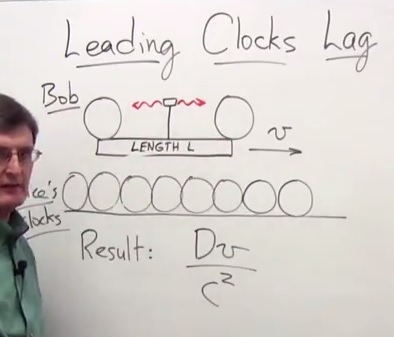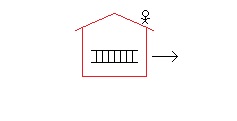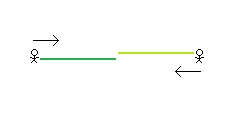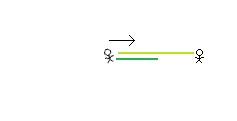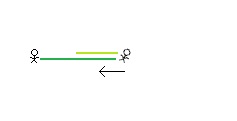

thomas reid
Members-
Posts
18 -
Joined
-
Last visited
Recent Profile Visitors
The recent visitors block is disabled and is not being shown to other users.
thomas reid's Achievements

Quark (2/13)
2
Reputation
-
I heard it said that electromagnetic waves have energy within them. Is that true? And, if so, what kind of energy is it? I don't think it would be thermal energy. I don't think it would be potential energy. What is it? Thank you.
-
oops ... I wrote "0.84 %" instead of "0.84" or "84 %"
-
-
Yes ... very helpful! Thank you for taking the time to spell all out so clearly. Where can I find the formula (for 10 rolls or so)? Again, thank you.
-
I've just begun the study probability and I have a very basic question. If I roll a fair dice I know I have a one in six chance of getting a "1". What is my chance of getting a "1" if I roll it twice? (It could be either on the first roll or the second roll or both. I am just concerned with getting a "1" at some point.) What is my chance of getting a "1" if I roll it ten times? (Same thing: I'm just concerned with getting a "1" (could be more than one "1") at some point.) I realize this may be too basic of a question for this forum, but I'm hoping someone will have the time to help me out with this really simple question. Thank you.
-
I've heard it said that Einstein first mentioned "light clocks" or first mentioned the dynamic that would lead to "light clocks" in his 1910 paper. (Sorry, I forgot where I heard that. But I believe I've heard that multiple times. Anyway ...) I've wanted to see if for myself and so I've gone looking for this 1910 paper, assuming that a paper this famous and this old would surely be in PDF format (and in English) on the internet. But I can't find it. In Wikipedia's list of Einstein publications (https://en.wikipedia.org/wiki/List_of_scientific_publications_by_Albert_Einstein), there are 6 publications listed for 1910. One of them is listed as dealing with Special Relativity directly (and so I assume this is the paper I'm looking for). It is listed as " Archives des sciences physiques et naturelles (ser. 4), 29, 5–28, 125–244 " I found a PDF of the original french journal. But I can't find it in English. Does anyone know of an English PDF version of this paper out there on the webs? Thank you. (According to the same Wikipedia page, this paper was translated. And it was translated by " E. Guillaume ")
-
I've been auditing a Relativity course on Coursera. (It's pretty good. This guy's a real clear thinker.) In one of his lectures he gives the formula for calculating the amount of non synchronization between two moving clocks. This is shown in the screen shot above. He says its the distance between the two moving clocks in the rest frame (in the screen shot above this is both "L" in his drawing and "D" in his formula) times the relative velocity divided by the speed of light squared. I have no reason to doubt him, but I just wanted to verify what he is saying by finding the same formula on another site (or sites). The strange thing is that when I type in "non synchronized clocks math formula" on Google I can't find anything like the formula above. So, I'm here to see if anyone knows if this is right the formula and if anyone knows of another web site with this formula (just for confirmation). Thank you.
-
" Obviously not. You are in your own rest frame, no? And you are seen as "physically shorter" by observers moving relative to you (and there are a near infinite number of those moving at different speeds and directions). But you are not contracted by all sorts of different amounts in different directions (in your own frame of reference) are you. " Then what about time dilation? I am in my own rest frame. And time is moving forward normally for me in my rest frame. I am also moving in other people's rest frames. And in their rest frames I am getting older by slower amounts. I don't just "appear" to be getting older by a slower amount in another rest frame, I am getting older by a slower amount. And in different rest frames, where I am moving at different speeds, I am getting older more slowly in some and I am getting older less slowly in others. Yes? Time dilation and length contraction are the two most basic relativistic dynamics. Perhaps it is the case that when it comes to time dilation I am really getting older by a lesser amount in another rest frame, but with length contraction I am not really getting shorter in that same other rest frame. Perhaps time dilation is not about mere appearances, while length contract may be (depending on how the word "appear" is used). I don't know. I suppose that argument can be made. I open to being wrong. But I just thought of an example of why I think it's proper to say that length contraction is "physically real" and not just a matter of "appearance" or "measurement" (regardless of how these two terms are defined). Think about the Ladder and Barn Paradox. (Without going into the whole story of the paradox) at one point in the "paradox", in the inertial frame of reference of the barn at rest, the ladder is within the two closed barn doors. And if the guy who is in control of these barn doors (differently from how the paradox is usually laid out) chooses to not reopen the barn doors, then the ladder will remain physically and really within the barn. (In this case it will collide with the closed barn door and then expand, but it will remain within the barn, assuming the barn doors are made out of strong stuff.) This is how I'm thinking about it. At this point in the Ladder and Barn Paradox, the ladder does not just "appear" to be in the barn or is not just "measured" to be in the barn, it is, in fact, in the barn. But ... maybe I'm wrong.
-
Okay ... so length contraction physically occurs. And if it physically occurs then it also "appears" that way because it is that way. ("Appears" is the word used on my Sparknotes flash card.) Cool. I guess I just find the flash card misleading when it uses the word "appears" and does not mention that it does happen. (It could "appear" to happen but not actually happen, or it could "appear" to happen because it happens.) Thank you. Cheers!
-
I don't want to go too far off topic (I would really like to get my question answered), but I don't think that the space between the jousters does shrink (in the inertial frame of reference of the jouster at rest). If the moving jouster himself is considered to remain in place (as he moves) relative to the length contraction then the length of the lance contracts towards him and the distance between the jouster at rest and the moving tip of the lance gets longer (in the rest frame), if the midpoint of the lance is considered to remain in place (at it moves) relative to the length contraction then the distance between the jouster at rest and the moving tip also gets longer (in the rest frame), and if the tip of the lance is considered to remain in place (at it moves) relative to the length contraction then the distance between the jouster at rest and the moving tip remains the same (in the rest frame). This usually isn't an issue when looking at Special Theory of Relativity thought experiments because they simply start out with the two bodies in relative motion and so which way the contraction occurred isn't at issue and we just start out with a body that is contracted in another frame of reference in which it is moving. Where I have found this is relevant is in Bell's Spaceship Paradox. (Again, I really don't want to go too far off topic.) Briefly and generally, Bell's Spaceship Paradox involves a distance that goes through acceleration (a string between to spaceships) and the question is what happens to the string (does it break). The resolution, in part, (again, briefly and generally) comes down to where force of acceleration occurs. And what happens is that if, say, the rocket engine is at the midpoint of each spaceship then the front and back of the space ship length contract in to that point (and if the rocket engine it at the front or at the back then the length contraction occurs forward or backwards). (And, yes, the main part of resolving this paradox is considering whether or not the two space ships take off at the same time from different perspectives.) --- I think length contraction is physically real in the rest frame. I think the moving body becomes physically shorter in its direction of motion in the rest frame. My flash card, however, has caused me to question this belief. And I guess I came here just looking for some confirmation (or disconfirmation).
-
My understanding (before encountering my Sparknotes card and was caused to question it) of length contraction is that in the rest frame the length of an object does not change and this is a real fact about the physical world, while in another frame of reference where it is in relative motion that same object is contracted in its direction of motion and this is also a real fact about the physical world. The word "contraction" is part of the phrase "Length Contraction." I don't know of a better word to use than the language of Relativity itself. Using your word, would you say that "time dilation" involves a "metamorphosis" of "time" (that is, a slowing down of time)? My question still is: is length contraction something that is viewed to happen or is it something that happens?
-
Can anyone sign up for iopscience or do i need a dot edu email address? I can imagine that I'm wrong about the correct resolution for the Jousters "paradox" ... but my question still is: is length contraction physically occurring or simply a matter of measurement and appearance? Time dilation must be physically real ... right? Time dilation is not just a matter of measurement and appearance ... right? So wouldn't the other basic relativistic dynamic, length contraction, also be physically happening?
-
studiot, yeah i get that every moving body length contracts ... but the question is does the person at rest just see those moving bodies contract or is it that they actually do contract for the person at rest? I bought up the Jousters Paradox because, to me, if it is the case the the moving jouster is knocked off his horse first in the other jouster's rest frame then, to me, this suggest that length contraction is not just a matter of measurement or appearance but rather an actual physical shortening in the rest frame. That's how I've understood length contraction but, again, my Sparknotes card seems to suggest otherwise and so that's the reason I ask the question I did in this thread. Thank you.
-
Yes, relativity of simultaneity is a relevant here. There are two events: knocking off the left jouster and knocking off the right jouster. And in one inertial frame of reference the sequence of these two events is left jouster is knocked off first and right jouster is knocked off second, and in the other inertial frame of reference the sequence of events is the right jouster is knocked off first and the left jouster is knocked off second. But what leads to this difference in sequence of events is "length contraction of the moving body in the direction of its motion." Or, at least, that is how I learned it.
-
In the "Jouster's Paradox" two jousters with lances of equal lengths when at rest are moving towards one another. And so in the one inertial frame of reference the one jouster gets knocked over first. And in the other inertial frame of reference the other jouster gets knocked over first. And the resolution of the "paradox" is that no body is a perfectly rigid body. And so after colliding the shortened lance (one or the other depending on which frame of reference is being considered) then stretches out on then knocks over the other jouster. If this is a correct statement of the Jouster's Paradox then, to me, it seems that length contraction must be real (there must be a real physical contraction of the length of the moving body in the resting body's frame of reference) for the moving jouster to get knocked off first (in the resting frame of reference) before the resting jouster gets knocked off (in the resting frame of reference). This is why the "appearance" reference on my flash card confused me. No?


